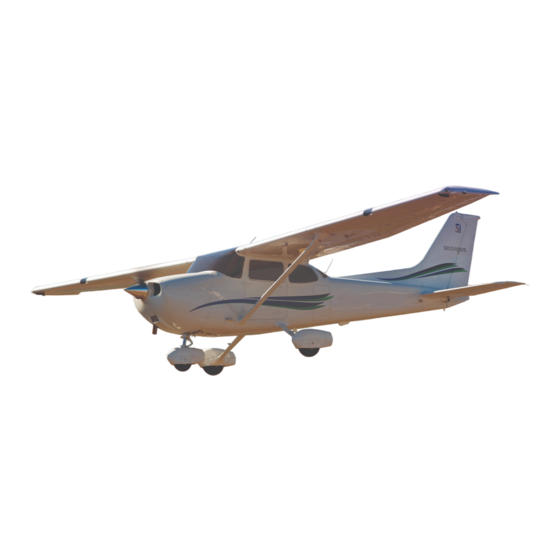
Textron Aviation Cessna 172S NAV III Skyhawk SP Manuals
Manuals and User Guides for Textron Aviation Cessna 172S NAV III Skyhawk SP. We have 1 Textron Aviation Cessna 172S NAV III Skyhawk SP manual available for free PDF download: Information Manual
Textron Aviation Cessna 172S NAV III Skyhawk SP Information Manual (490 pages)
Brand: Textron Aviation
|
Category: Aircrafts
|
Size: 10 MB
Table of Contents
-
-
Introduction15
-
Engine15
-
Propeller15
-
Fuel16
-
Oil Capacity17
-
Oil17
-
-
Introduction43
-
Gps - Waas61
-
Placards63
-
-
-
Introduction73
-
Ditching77
-
Fires78
-
Cabin Fire80
-
Wing Fire81
-
Icing82
-
Fires95
-
Spins99
-
Low Oil Pressure102
-
-
Cabin111
-
Empennage112
-
Right Wing113
-
Nose114
-
Left Wing115
-
Before Takeoff121
-
Normal Takeoff124
-
Takeoff124
-
Cruise125
-
Descent125
-
Enroute Climb125
-
Before Landing127
-
Landing127
-
Normal Landing127
-
After Landing128
-
Balked Landing128
-
Starting Engine131
-
Taxiing134
-
Alternator Check136
-
Before Takeoff136
-
Magneto Check136
-
Warm up136
-
Elevator Trim137
-
Landing Lights137
-
Power Check137
-
Takeoff137
-
Enroute Climb139
-
Cruise140
-
Spins146
-
Stalls146
-
Landing153
-
Normal Landing153
-
Balked Landing154
-
Starting156
-
-
Introduction161
-
Sample Problem162
-
Takeoff163
-
Cruise164
-
Fuel Required165
-
Landing167
-
Range Profile180
-
-
-
Introduction185
-
Baggage Tiedown191
-
Loading Graph194
-
-
Airframe211
-
Introduction211
-
Flight Controls213
-
Trim Systems213
-
Instrument Panel216
-
Altimeter224
-
Ground Control227
-
Wing Flap System228
-
Seats230
-
Control Locks234
-
Engine235
-
Engine Controls235
-
RPM (Tachometer)237
-
Fuel Flow238
-
Oil Pressure238
-
Oil Temperature239
-
Cooling System243
-
Exhaust System243
-
Propeller243
-
Fuel System244
-
Fuel Venting250
-
Brake System252
-
Master Switch257
-
Avionics Switch258
-
Lighting Systems265
-
Vacuum Indicator271
-
Antennas279
-
12V Power Outlet282
-
Cabin Features284
-
-
-
Introduction289
-
Publications291
-
Airplane File292
-
Ground Handling295
-
Parking295
-
Towing295
-
Jacking296
-
Tiedown296
-
Flyable Storage297
-
Leveling297
-
Servicing298
-
Fuel301
-
Fuel Capacity301
-
Fuel Additives302
-
Landing Gear307
-
Painted Surfaces309
-
Engine Care310
-
Propeller Care310
-
Avionics Care311
-
Interior Care311
Advertisement
Advertisement
